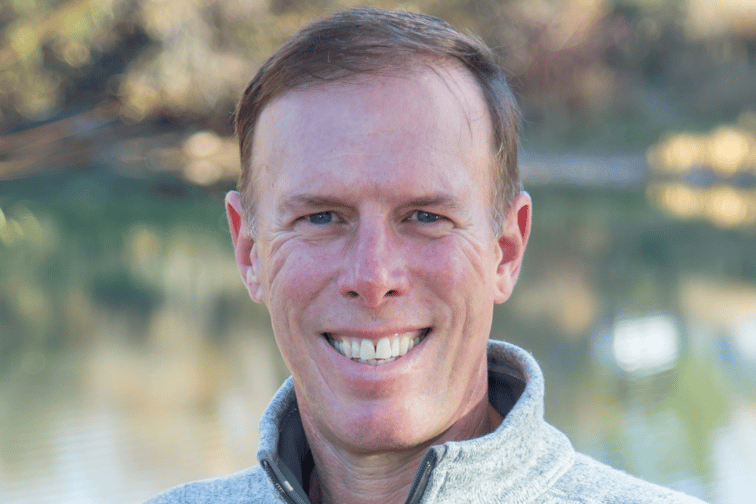

Rising sea and ambient air temperatures have enabled recent storms, including Hurricanes Hilary and Idalia, to hold more energy for longer periods of time. This has directly affected their strength and capacity for destruction, according to John Dickson, CEO and president of Aon Edge.
Hurricanes Hilary and Idalia, as well as other recent weather events, been retaining a greater amount of energy, according to Dickson.
“That's directly connected to rising sea and ambient air temperatures that enable these systems to hold on to energy for a longer period of time,” he said. “And that greatly increases the geographic footprint.”
In an interview with Insurance Business, Dickson spoke about how the changing nature of these weather events is prompting a need to assess risk better. He also explained why flood maps need to be updated and how risk prevention and preparedness are crucial to avoiding claims and minimizing losses.
One big takeaway from both Hilary and Idalia is the amount of energy these storms can retain and the speed at which they intensify and impact a larger topography.
“Idalia went from a tropical storm to a category 4 hurricane in a matter of two days,” Dickson said.
And while it created a massive storm surge that pushed up into Cedar Key Area, “the rainfall that's happening across Georgia is actually causing more flood claims than what you saw in in Florida.”
Similarly with Hurricane Hilary, California witnessed its first tropical system to make landfall in the state in almost a century.
The sheer amount of energy that was feeding the storm allowed it to push further inland and into Palm Desert, which resulted in an equivalent of a year’s worth of rain in a little over 24 hours.
“In the past, the systems were characterized by wind and storm surge, but today, the impact of water is from rainfall,” Dickson said.
The byproduct of these storm systems is becoming the biggest risk to homeowners, especially since “the events don’t happen in a vacuum and have the potential to impact other states and communities not directly affected by the storm directly.”
As an industry, these events have necessitated a continued investment in insurance and its ability to assess risk comprehensively.
Part of this involves moving away from outdated modelling to create a more contemporary profile for customers who are vulnerable to the next great storm.
“We have to be able to help those property owners understand where their property sits today as opposed to just looking at looking at property through yesterday's risk lens,” Dickson said.
Brokers and insurers also need to better relay to customers the need for flood insurance, especially in places that may fall outside of hotspots but are still at risk of weather events that are increasing in scope.
“Another thing that we saw with the flooding from Hillary was that the areas affected were dominated by ‘non mandatory purchase areas,’ which is why insurance recoveries are going to be nominal, but the economic impacts are going to be larger,” Dickson said.
Extreme rainfall from #Idalia now moving into southern Georgia. Latest radar: pic.twitter.com/M40uAjDXab
— Zoom Earth (@zoom_earth) August 30, 2023
Another key factor contributing to an outdated risk assessment is evident in the flood maps that are used to determine whether a region will be affected by a storm or significant rainfall.
“A number of these maps are out of date by years,” Dickson said.
While insurers recognize that the Federal Flood Insurance Program has an incredible mandate that promises to provide flood protection to all Americans, “there’s no private enterprise that can operate under that mandate that they're challenged to execute,” Dickson stated.
Part of its mandate is to maintain those flood insurance rate maps, which is a daunting task, and has led to a lag in updating areas that are now prone to natural catastrophes that previously were not.
“If the map for your community hasn't been updated in 10 years and that's what you're relying on to make decisions about today's risks, you're not equipped to make the best decision today that you can,” Dickson said.
Alongside better risk assessment also comes the need for preparedness measures, where brokers and insurers need to emphasize their advisory skills and have meaningful, if difficult, conversations with insureds.
“Our core mission is to help people make better decisions,” Dickson said.
“And those decisions can be far ranging, covering a broad spectrum of actions that people can take, but it all starts with having information so that you can make those decisions that are best for them.”
Reaching out to insureds about the potential dangers that lie ahead of a natural disaster that is about to take place is paramount, so the earlier that preparation is thought about and implemented, the better off a client can be.
Dickson recommends that insurers and brokers inform a client of how important it is to take a visual inventory of their property to create a conversation on what preparedness tips and mediation steps can be taken.
“Think about things like a storm shutters and windows, and how you can keep water and wind out of the house,” Dickson said.
Brokers can also impart useful tips on how to effectively protect and fortify the crawlspace a house so that if water comes, it does not ship the house off the foundation.
“You can't try to piece things together after the flood happens,” Dickson said.
“It all boils down to investing today to prepare for tomorrow's unknowns.”
